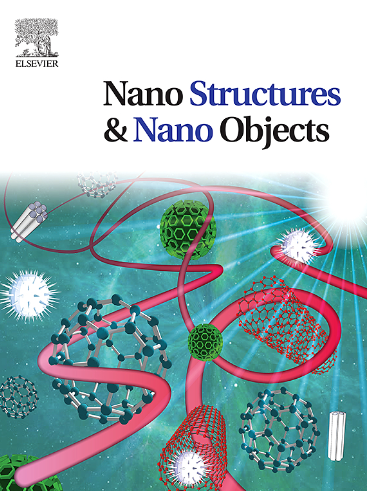纳米工程富镁甘蔗渣对污水中重金属和大肠杆菌的双重净化
IF 5.45
Q1 Physics and Astronomy
引用次数: 0
摘要
甘蔗渣(SCB)是一种纤维状木质纤维素废料,当甘蔗被粉碎以提取用于乙醇和糖制造的汁液时形成。该研究的目的是研究化学变化如何影响SCB与Mg结合的性质,以及它在去除三种重金属(铜(Cu2 +)、锌(Zn2+)和铅(Pb2+)以及污染废水中的大肠杆菌(E. coli)方面的成功程度。利用布鲁诺尔-埃米特-泰勒(BET)表面积分析仪、热重分析(TGA)、傅里叶变换红外(FTIR)峰分析和能谱分析(EDS)研究了在600°C和800°C温度下生成的生物炭的化学和物理特性。通过间歇式吸附试验,研究了蔗渣生物炭(SCBB)对溶液中Cu、Pb和Zn的吸附能力。采用Langmuir吸附等温线和Freundlich吸附等温线对吸附数据进行了分析。结果表明,Langmuir等温线模型的拟合精度最高。采用SCBB作为生物吸附材料对污水和工业废水进行了准确估计(接触时间1小时,最佳投加量800 ppm)。SCBB对生物需氧量(BOD)、化学需氧量(COD)和总悬浮固体(TSS)的最大去除率分别为81.4、83.5和89.2 %。硝态氮(NO3-N)达到52.2% %,全磷(TP)达到63.2 %。Pb、Zn和Cu被完全去除。SCBB对大肠杆菌的最低抑菌浓度(MIC)为600 mg/mL。使用800 mg/L的SCBB,在一小时内将大肠杆菌从废水中完全根除。本研究开发了高效、经济、环保、多功能的mgo改性SCBB吸附剂,作为一种有前景的环境修复技术。本文章由计算机程序翻译,如有差异,请以英文原文为准。
Nano-engineered magnesium-enriched sugarcane bagasse for dual decontamination of heavy metals and E. coli in sewage water
Sugarcane bagasse (SCB) is a fibrous lignocellulosic waste formed when sugarcane is crushed to extract juice for ethanol and sugar manufacture. The study's goal was to look at how chemical alteration affects the properties of SCB combined with Mg and how successful it is at removing three heavy metals including (Copper (Cu2 +), Zinc (Zn2+), and Lead (Pb2+)) as well as Escherichia coli (E. coli) from contaminated wastewater. The chemical and physical characteristics of the biochar generated were investigated at temperatures of 600°C and 800°C using the Brunauer-Emmett-Teller (BET) surface area analyzer, thermo gravimetric analysis (TGA), Fourier transform infrared (FTIR) peak analysis, and energy dispersive X-ray (EDS). A batch sorption test was carried out to determine the ability of sugarcane bagasse biochar (SCBB) to adsorb Cu, Pb, and Zn from solution. The adsorption data were examined using the Langmuir and Freundlich adsorption isotherms. The results indicate that the Langmuir isotherm model produced the best precise match. An accurate estimate for employing SCBB as a biosorbent material was used in sewage and industrial wastewater (contact time one hour, optimal dosage 800 ppm). The SCBB achieves maximum removal rates of 81.4, 83.5, and 89.2 % for biological oxygen demand (BOD), chemical oxygen demand (COD), and total suspended solids (TSS), respectively. However, nitrate nitrogen (NO3-N) reached 52.2 %, while total phosphorus (TP) reached 63.2 %. Pb, Zn, and Cu were completely removed. The minimum inhibitory concentration (MIC) of SCBB against E. coli was 600 mg/mL. E. coli is completely eradicated from wastewater using 800 mg/L of SCBB in one hour. The present study developed potent, cost-effective, ecofriendly and multifunctional adsorbent of MgO-modified SCBB for safely wastewater de-pollution as a promising environmental remediation technology.
求助全文
通过发布文献求助,成功后即可免费获取论文全文。
去求助
来源期刊

Nano-Structures & Nano-Objects
Physics and Astronomy-Condensed Matter Physics
CiteScore
9.20
自引率
0.00%
发文量
60
审稿时长
22 days
期刊介绍:
Nano-Structures & Nano-Objects is a new journal devoted to all aspects of the synthesis and the properties of this new flourishing domain. The journal is devoted to novel architectures at the nano-level with an emphasis on new synthesis and characterization methods. The journal is focused on the objects rather than on their applications. However, the research for new applications of original nano-structures & nano-objects in various fields such as nano-electronics, energy conversion, catalysis, drug delivery and nano-medicine is also welcome. The scope of Nano-Structures & Nano-Objects involves: -Metal and alloy nanoparticles with complex nanostructures such as shape control, core-shell and dumbells -Oxide nanoparticles and nanostructures, with complex oxide/metal, oxide/surface and oxide /organic interfaces -Inorganic semi-conducting nanoparticles (quantum dots) with an emphasis on new phases, structures, shapes and complexity -Nanostructures involving molecular inorganic species such as nanoparticles of coordination compounds, molecular magnets, spin transition nanoparticles etc. or organic nano-objects, in particular for molecular electronics -Nanostructured materials such as nano-MOFs and nano-zeolites -Hetero-junctions between molecules and nano-objects, between different nano-objects & nanostructures or between nano-objects & nanostructures and surfaces -Methods of characterization specific of the nano size or adapted for the nano size such as X-ray and neutron scattering, light scattering, NMR, Raman, Plasmonics, near field microscopies, various TEM and SEM techniques, magnetic studies, etc .
 求助内容:
求助内容: 应助结果提醒方式:
应助结果提醒方式:


